By Gerard Huissen
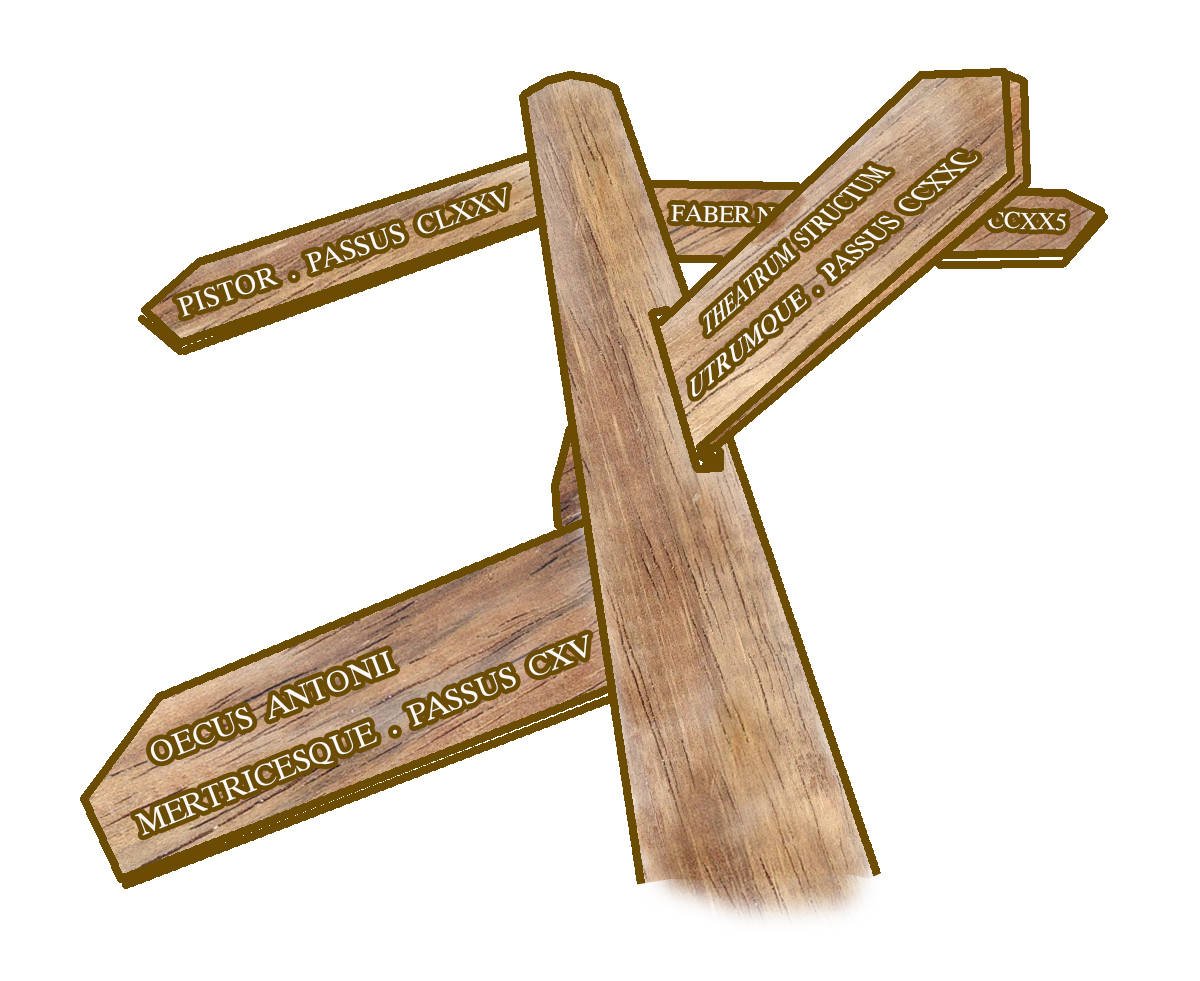
Some years ago Jan Theo Bakker, archaeological adviser of Roman Ports, and I decided to shoot a couple of scientific movies at Ostia. I was on vacation in Italy and Jan Theo visited me for a couple of days. Till that moment I hadn’t the slightest idea about the subjects of the film. On the archaeological site he seemed to have prepared two subjects. The first one was about the well-known bakery and corn-mill, the Caseggiato dei Molini1 (the house with the mill-stones). This made sense because he had been promoted as a doctor in archaeology on, among others, a part of this building, the Sacello del Silvano (Sanctuary of Silvanus).
The second subject was completely new to me. Jan Theo called it ‘Travertine Corner-stones’2. I didn’t understand immediately what he was talking about, but he explained:
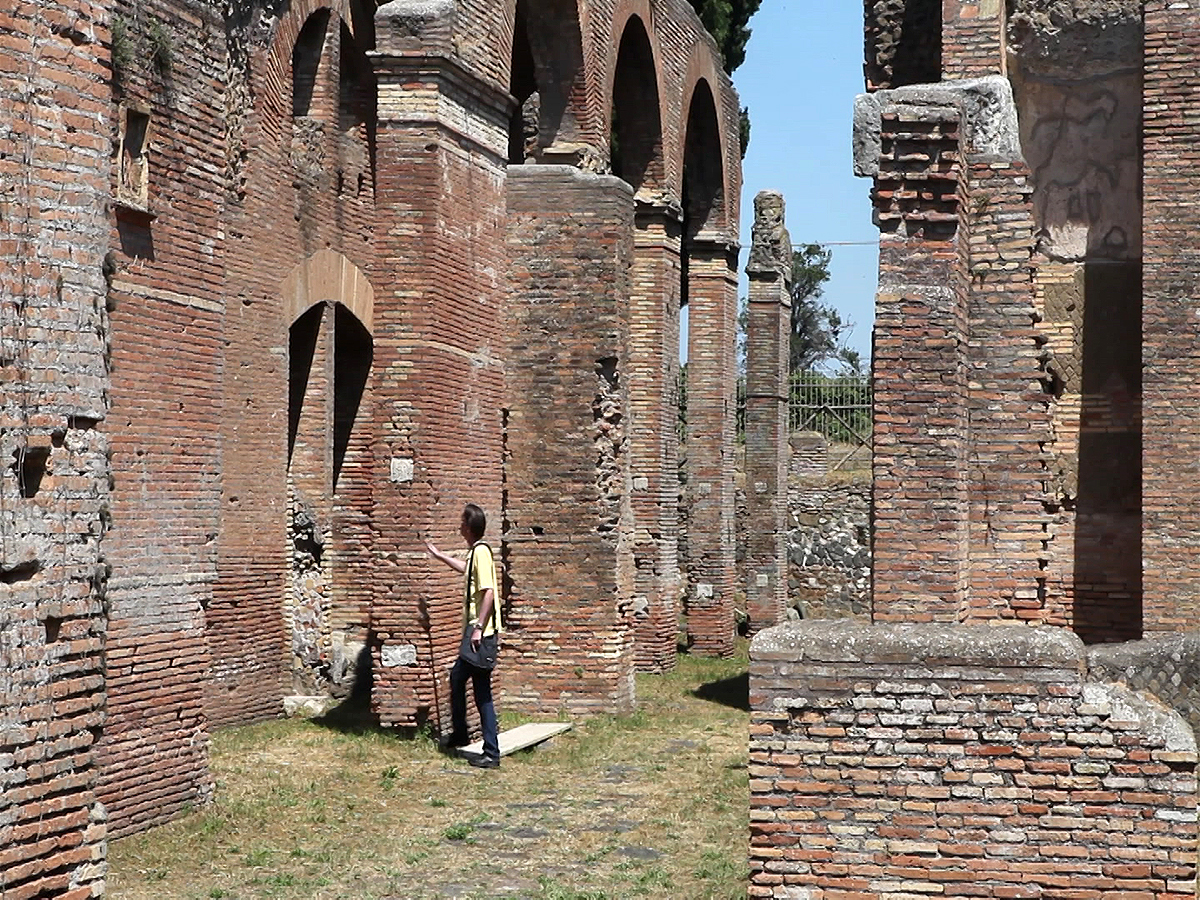
In antiquity the building material travertine was often used instead of the much more expensive marble. It was used for doorposts, thresholds, lintels, toilet seats, floors etc. On several corners of brick columns, by stairs or doorways, small pieces of travertine were incorporated in the brick. Few modern visitors of Ostia will have noticed these travertine stones. According to Jan Theo the stones were sometimes located on unexpected places, the number of stones was relatively low and they were not structurally used one building after another. Therefore they could hardly be seen as a decorative style from one or another particular era3.
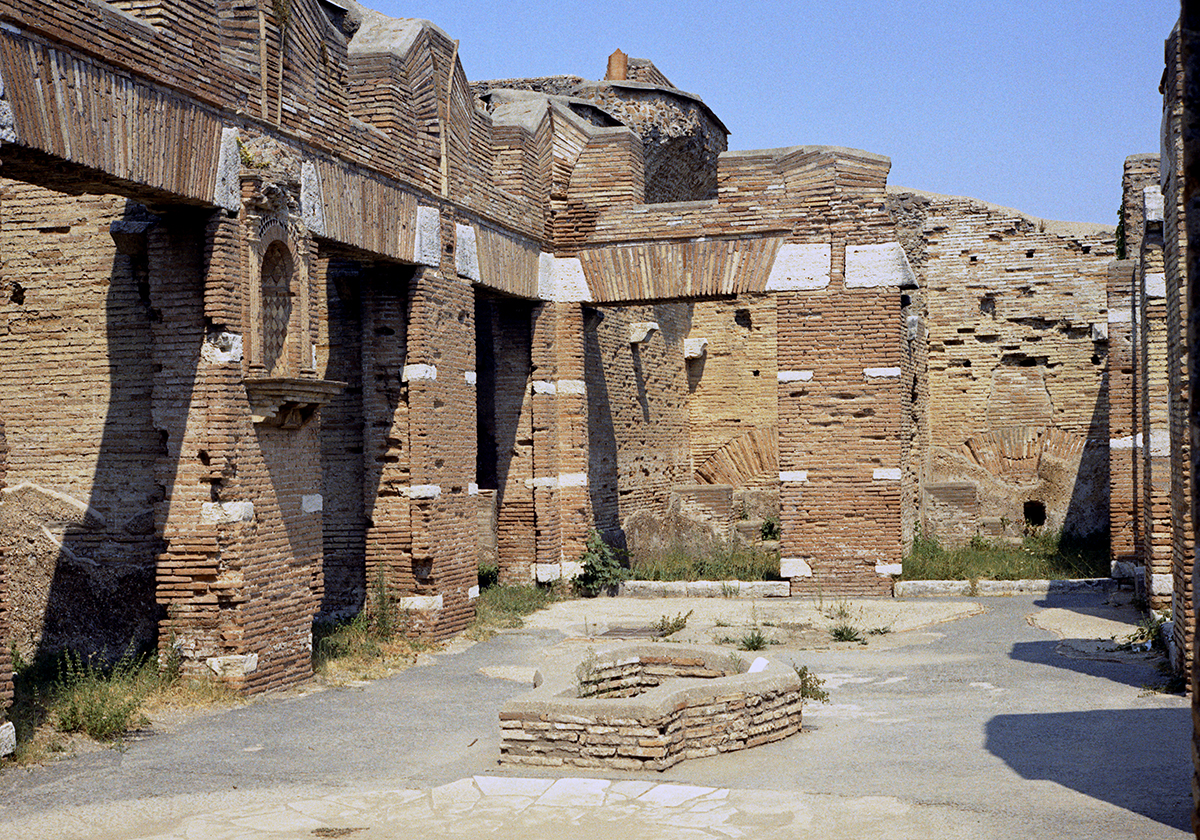
Often a specific feature could not easily be assigned to many of these stones, partly because they were placed at different heights. However, he told me, there was a cohesion, a recognisable system in the placement of the stones. He came with the following hypothesis, which he, as he told himself, had filtered from the first results of a research project on the use of travertine at Ostia done by his former mentor dr. Bouke van der Meer. This research project4 has already been finished for a couple of years and we will see to what extent van der Meer supports the below mentioned theory.
Did the visitors of Roman Ostia have road-signs at their disposal?
The hypothesis.
Crews of ships entering a harbour were often, just like modern tourists, strangers in that port city. Strangers with needs after a long voyage: fresh food, medical help, spare parts for the ship etc. How could a sailor find a particular address where he could buy new provisions or spare parts, give orders to carry out repairs, visit a doctor or find a prostitute? There were no street names and in a busy port town you got lost very quickly.5

According to Jan Theo’s theory the authorities of Ostia had figured out, at the urging of the emperor himself, a solution for this problem. By attaching small travertine stones in the walls at regular distances, routes, leading to particular locations in the city, were marked. For instance one route was running from the Caseggiato dei Misuratori del Grano (the Building of the Grain Measurers) alongside the river Tiber to the Horrea Epagathiana et Epaphroditiana, a small fortified warehouse for almost certainly valuable goods (see video ‘corner-stones’). Another route ran towards a corn-mill where bread could be bought. Jan Theo mentioned several examples like these.
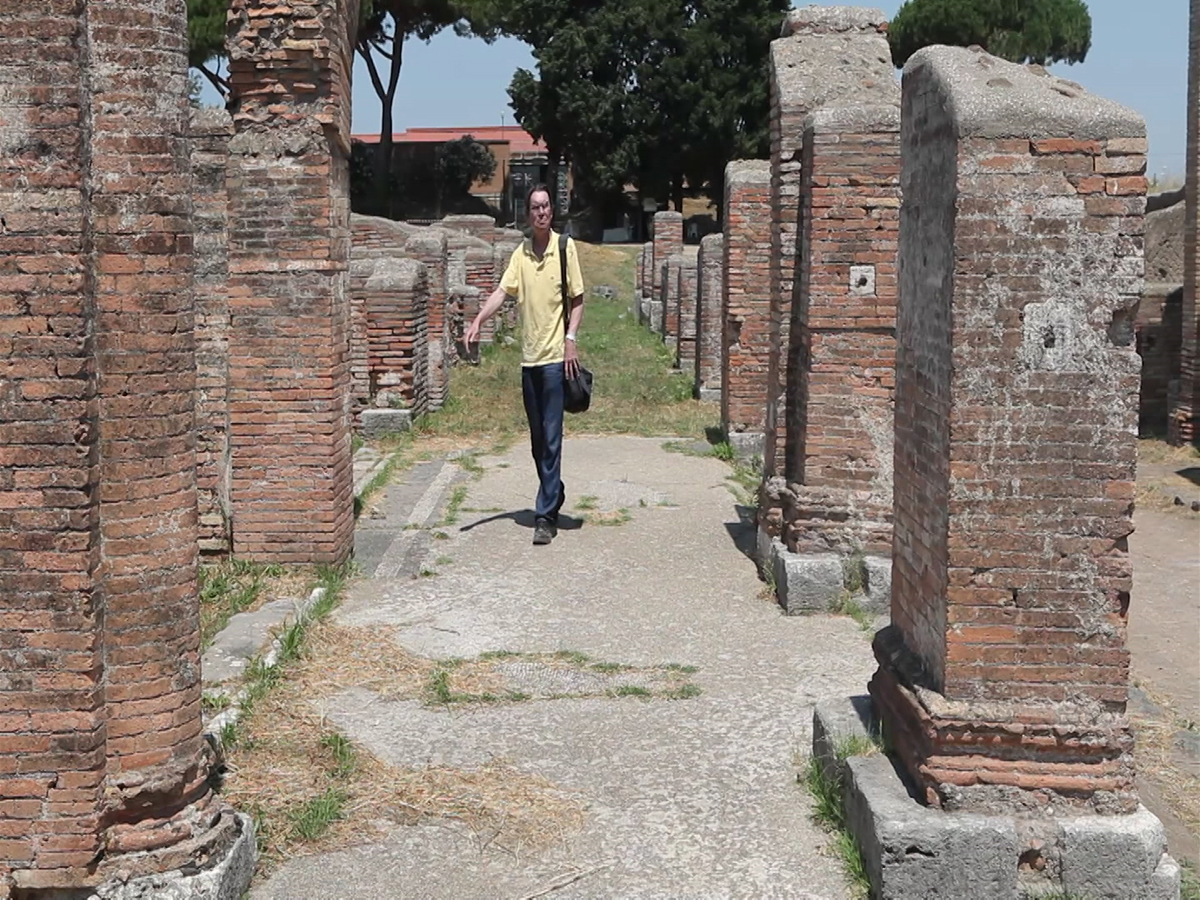
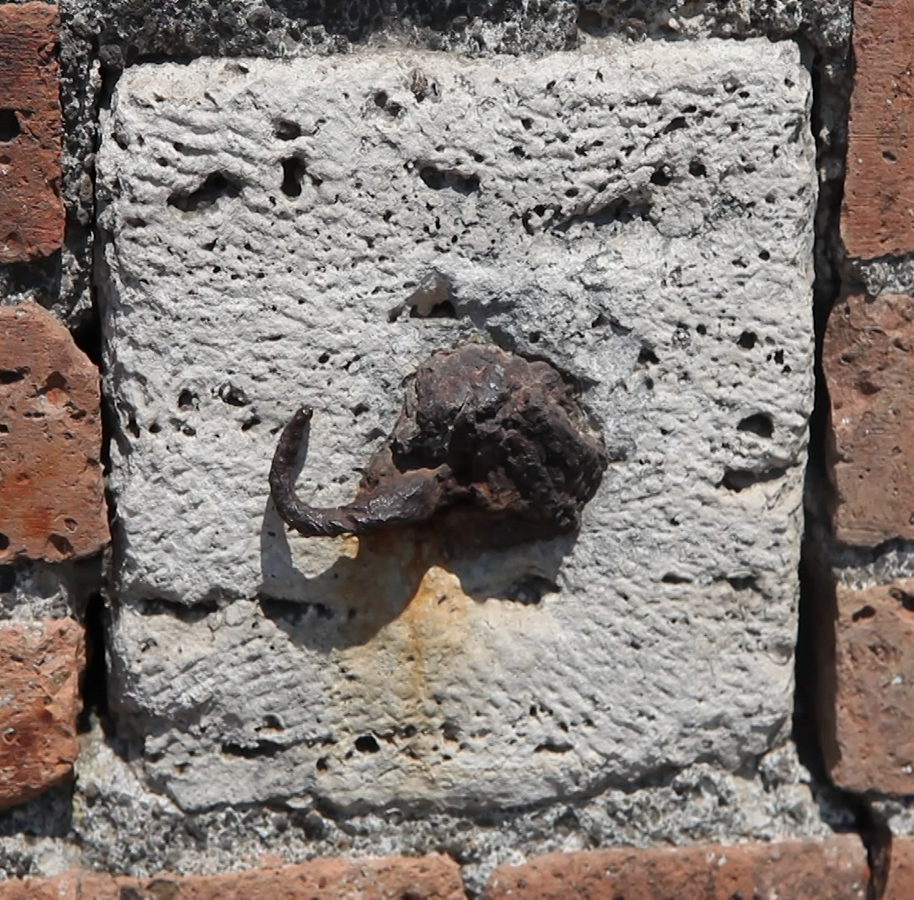
Besides these ‘raw’ corner-stones, stones were also used in the middle of columns of arcades. Those travertine stones served a clear purpose. In the middle of the stones is a hole in which a metal hook was mounted from which a rope or chain was suspended to manage the public, for example, to their places in a theatre or at the entrance of baths. Some of these hooks are still in situ. This last mentioned function should be an indication that the small travertine stones were generally used to lead people somewhere, to their places in a theatre or to another location in Ostia.
Although I’m not a scientist myself, I had my reservations about this theory, which became stronger and stronger during the following years. Being aware of these travertine stones, you see them more and more in Ostia. I became obsessed with Jan Theo’s theory and decided to ask van der Meer personally after his opinion. Mr. van der Meer told me that the matter was not that easy and hard to explain. Time for me to read his article again and to look what he has written about it.
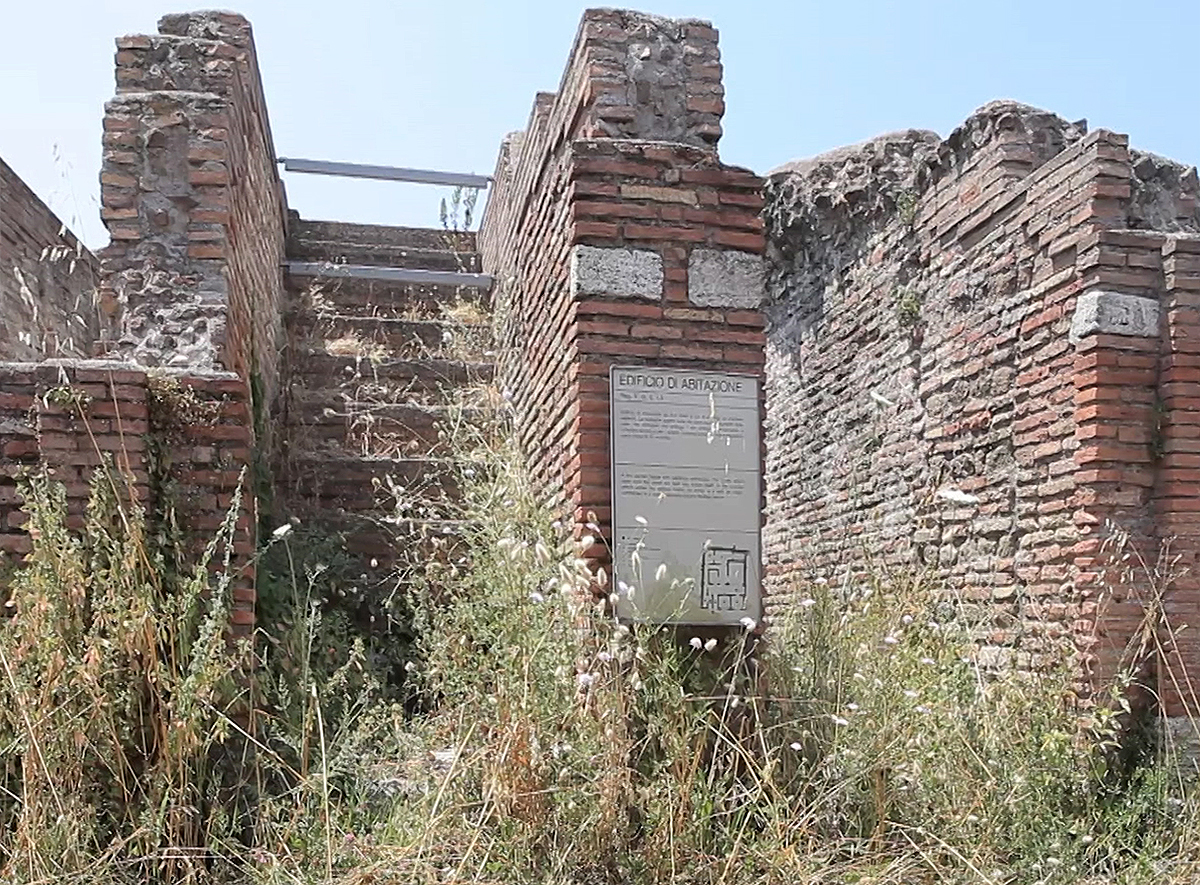
Tiburtinus lapis, the use of travertine in Ostia by L.B. van der Meer en N.L.C. Stevens
Besides the already mentioned use as doorposts, thresholds etc. travertine was also used for buffer-stones as protection at the corners of buildings and to mark the beginning and end of that building or to mark a complete area. The stones were also placed on both sides of doorways, with holes for anchoring bars and to lock a door.
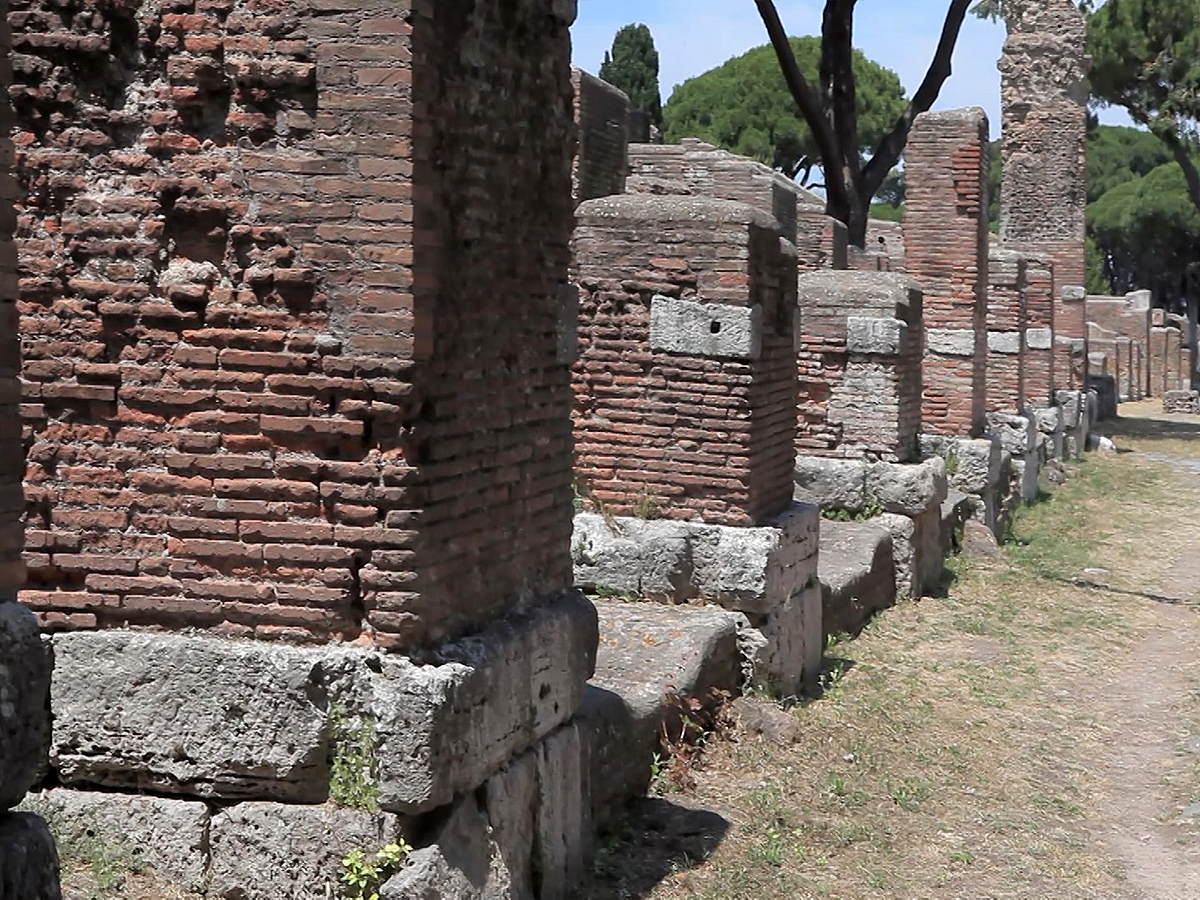
Photo 7: Corner-stones, according to Jan Theo used for anchoring of
chains or ropes - Terme del Foro
In all these cases the travertine stones had an intended use although their forms and measurements were not standardized. About the corner-stones Van der Meer writes: “Most corner-stones do not have bar holes. Because of their irregular, non-standardized form, corner-stones are not needed to strengthen walls. Therefore, they were principally aesthetic and may have emphasized the status of buildings.” (In my opinion, this substantiates Jan Theo’s theory-red.).
Further on in the article he writes: “Travertine was used primarily to bear weight, but it also had liminal, marking, corner accentuating, protective, substituting, layout- and aesthetic and status-functions.”
He continues with: “Generally, travertine has more than one function. Before circa 200 A.D. elements like corner-stones may have been status symbols; after circa 200 A.D. travertine lost its prestigious character. With the exception of the lower steps of staircases, not many standardized building elements have been found. We must conclude that much of it was made ad hoc.”
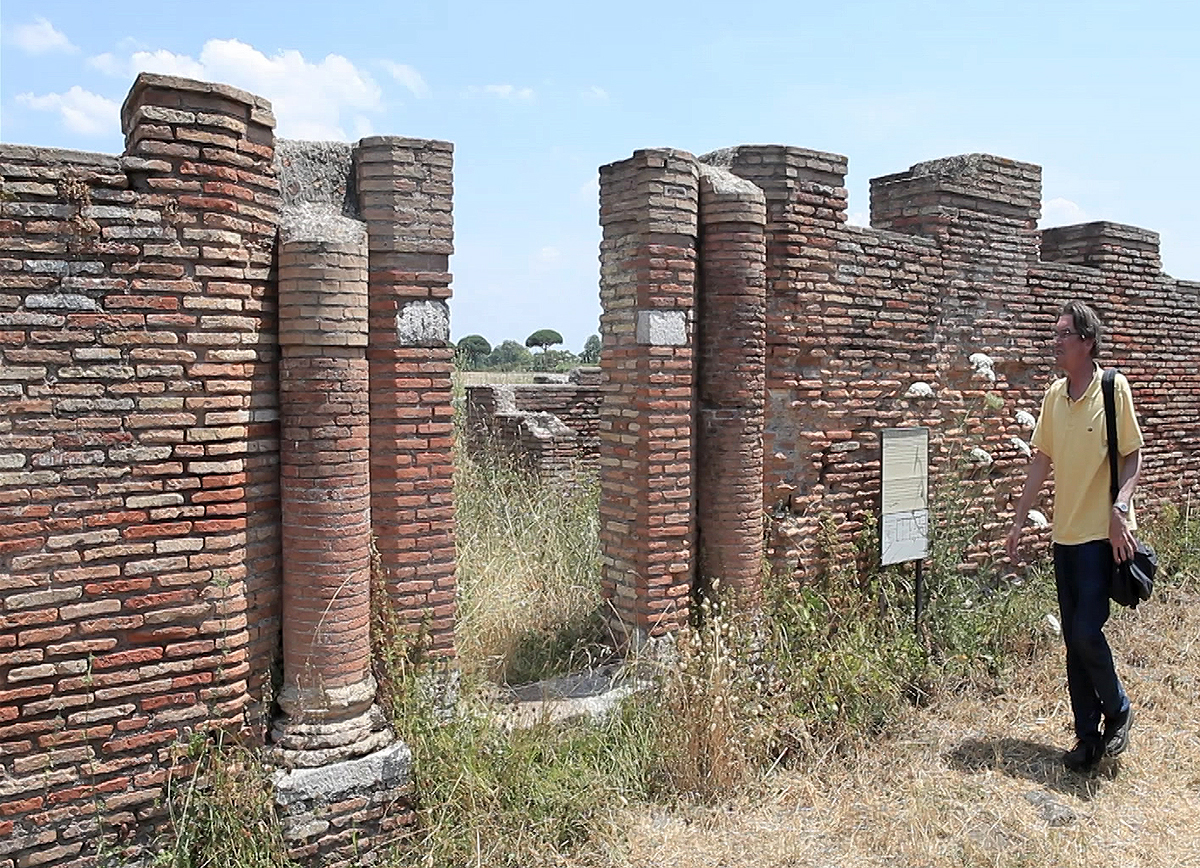
Conclusion
Van der Meer shows clearly the function of many applications of travertine, including the use of some small stones with bar holes by doors. About the use of other small travertine stones with holes the opinions of both gentlemen differ.
About the stones without a clear function van der Meer is using the qualifications aesthetic, status and marking. This brings us to the following question: “Which status and marking of what?”. All three concepts are, in my opinion, more or less hypothetical and, by using the word marking, did van der Meer also mean ‘road-signs’? We don’t know. It is one hypothesis against the other. At the end of the film Jan Theo probably used the most wise words: “About my hypothesis, maybe I’m wrong……but aren’t hypotheses a part of archaeology?”.
Finally our question still remains, was there a kind of road-guide in Ostia or not? We know that on the quays in a harbour many people were offering all kinds of services. Maybe among them, and that’s my own hypothesis, were people who brought strangers, with or without payment, to the right addresses. Who knows better may say so and solve the puzzle. Luckily for us, small paper guides with all the addresses in Ostia are available today.
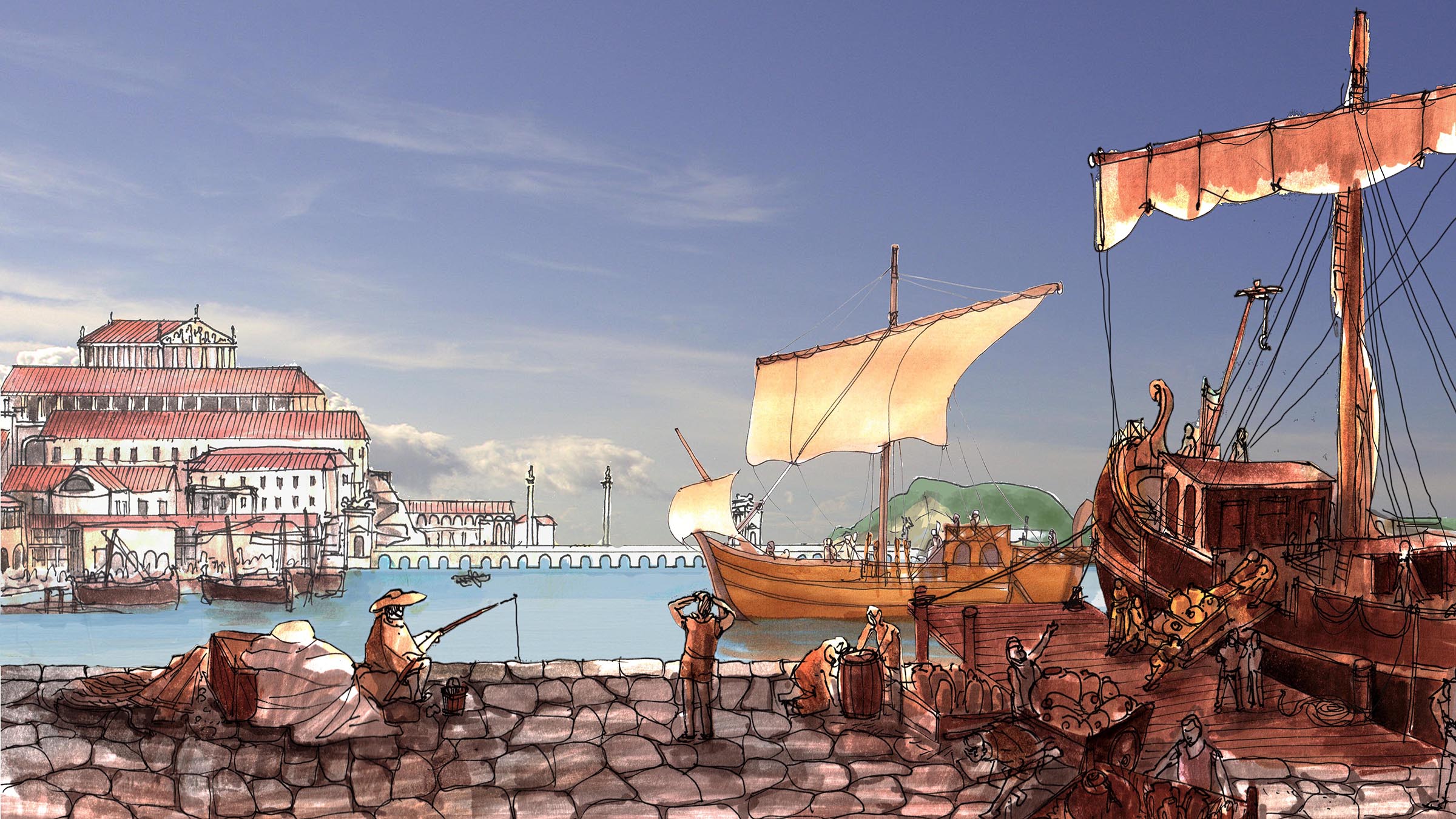
- notes:
- 1: Click here for the video about Caseggiato dei Molini
- 2: Click here for the video about the Travertine corner-stones.
- 3: The Caseggiato del Larario, a kind of shopping centre, is the only building in Ostia where uniform use of the corner-stones can be seen.
- 4: Click here for the whole reseach report: Tiburtinus lapis, the use of travertine in Ostia,
L.B. van der Meer and N.L.C. Stevens - Babesch 75 (2000), 169-195. - 5: L.B. van der Meer told me that street names and numbers of houses and buildings probably were written on transient material and therefore have not survived. Roger Ling on the contrary writes in his research on street names and house numbers: “There is no reason to believe that street-names were inscribed or painted on actual walls, they are occasionally marked on maps or (more frequently) recorded in documents. The ancient traveller might have been told to ‘turn right at the cock fountain’, turn right at the Inn of Hyginius Firmus’, ‘turn left at the Inn of the Elephant’ and so forth.” - A stranger in Town: Finding the way in an ancient City: Roger Ling, Greece and Rome 37,2 (Octobre 1990), 204-214.
- 6: Hypothesis of Jan Theo Bakker based on the importance of the protection of trade, especially the corn supply, given to it by the emperor.
- 7: Tiburtinis lapis, the use of travertine in Ostia 4.7 Corner-stones.
- 8: Tiburtinis lapis, the use of travertine in Ostia 4.11 General conclusions and observations.
- 9: Drawing: Cristiano Fiorentino. (Puteoli)






 We are committed to providing versions of our articles and interviews in several languages, but our first language is English.
We are committed to providing versions of our articles and interviews in several languages, but our first language is English.